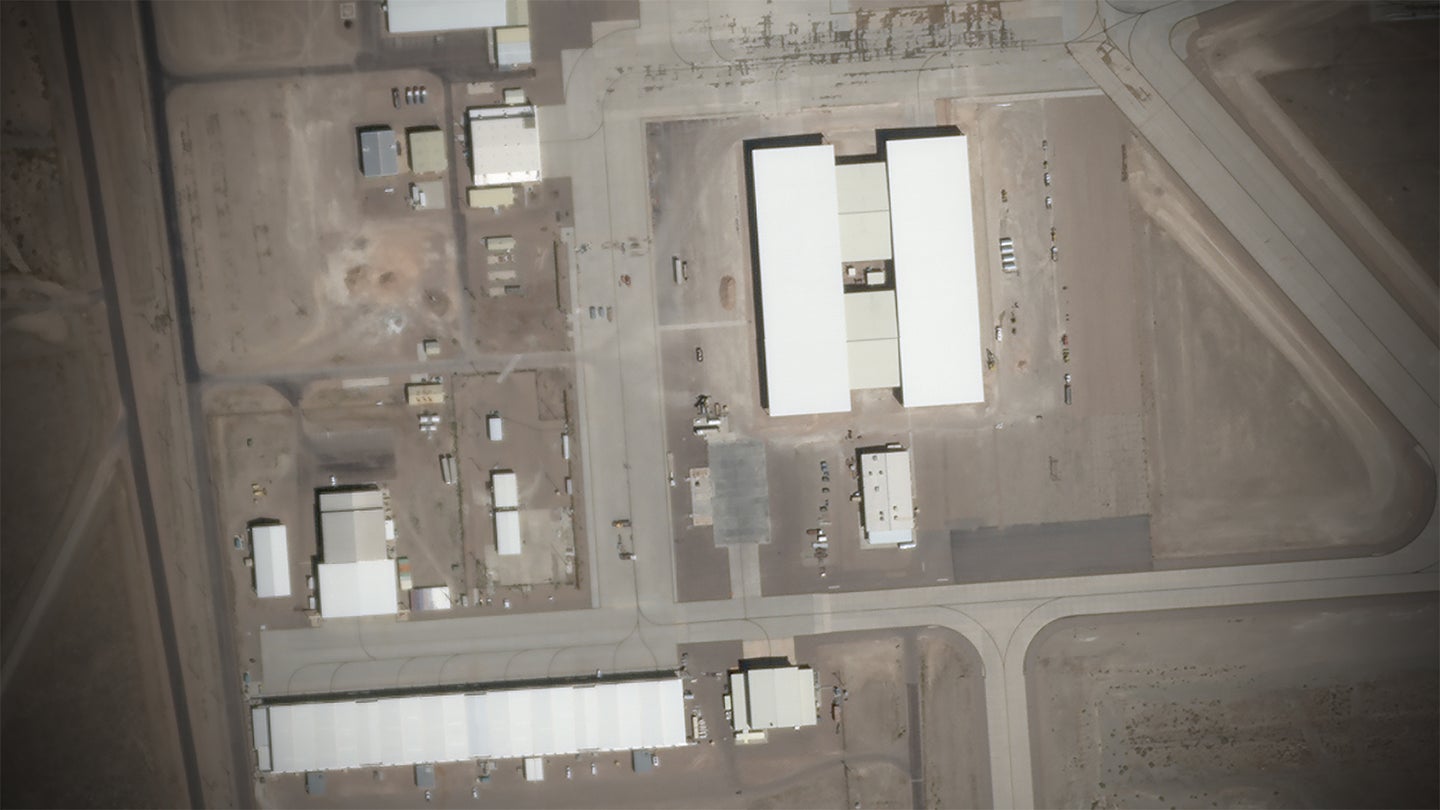
When it comes to technology, certain developments are as natural as night following day. The DRONE took years to develop and perfect and fully integrate with advanced computer power.
Just as inevitably the next generation of war plane(s) will not have a resident pilot. Sorry boys. The next generation of electric vehicles will also lack a driver. Thus land and air war will now optimize this technology to win conflicts.
The starting point for aerial dtrones will be supersonic weapon platforms able to do ten and twenty g turns and send a hyper sonic missle into an opponent while operated by a pilot a long way away. In fact we can put a thousand such birds into the conflict zone all mamaged by a thousand separate pilots elsewhere.
All this depends of having the edge on processor tech and little else.
..
Area 51 Has A Huge New Hangar Facility That Points To A Drone Swarm Future
The Air Force is accelerating its advanced combat drone development efforts and the facility's unique attributes seem perfect for supporting them.
SEPTEMBER 25, 2020

TYLER ROGOWAYView Tyler Rogoway's Articles
https://www.thedrive.com/the-war-zone/36698/sprawling-new-hangar-facility-at-area-51-points-to-the-arrival-of-the-drone-swarm
The Air Force's clandestine flight test center deep inside the Nevada Test and Training Range, known as Area 51 or Groom Lake, among more colorful nicknames, continues to grow as it approaches its seventh decade of operations. Constant construction has grown the remote facility dramatically since the turn of the millennium, including the addition of a massive and still mysterious hangar built at the base's remote southern end. Now, an even larger extension to an existing hangar facility that is quite peculiar in nature points to the very real possibility that the age of large swarms of unmanned combat air vehicles (UCAVs) has finally arrived.

THE AIR FORCE'S SECRET NEXT GEN AIR DOMINANCE DEMONSTRATOR ISN'T WHAT YOU THINK IT ISBy Tyler RogowayPosted in THE WAR ZONE
PILOT TAKES AMAZING IMAGES OF AREA 51 AND TONOPAH AIR BASE WHILE SKIRTING RESTRICTED AIRSPACEBy Tyler RogowayPosted in THE WAR ZONE
NEW HANGARS CONSTRUCTED AT EDWARDS AFB AHEAD OF B-21 RAIDER'S ARRIVALBy Tyler RogowayPosted in THE WAR ZONE
THE ALARMING CASE OF THE USAF’S MYSTERIOUSLY MISSING UNMANNED COMBAT AIR VEHICLESBy Tyler RogowayPosted in THE WAR ZONE
AREA 51 HAS ITS OWN UNIQUE FLEET OF HH-60U GHOST HAWK HELICOPTERSBy Joseph TrevithickPosted in THE WAR ZONE
For around a year, construction has been underway in a prominent section of the southern ramp area at the base, near where the original A-12 Oxcart hangars still stand. A quartet of more modern hangars that are divided into two separate buildings, with each bay measuring roughly 90 feet wide, and are understood to be known as hangars 20-23, has been the recipient of a highly curious series of modifications.
The hangars have stood for decades and are thought to largely serve Air Combat Command tactical aircraft programs, including supporting F-117 testing for many years. At first, it looked like they were about to be torn down. This didn't end up being the case. Instead, massive enclosures were built over the aprons that flank the east and west sides of the original drive-through hangars.


PHOTO © 2020 PLANET LABS INC. ALL RIGHTS RESERVED. REPRINTED BY PERMISSION.
From left to right: February 2020, July 2020, September 2020.
In addition, the soft structure located just to the southwest of hangars 20-23 that has been badly torn for years and was eventually patched, has now been totally demolished. Interestingly, it appears that the soft structure actually concealed a unique-looking building inside of it, before it was torn down.

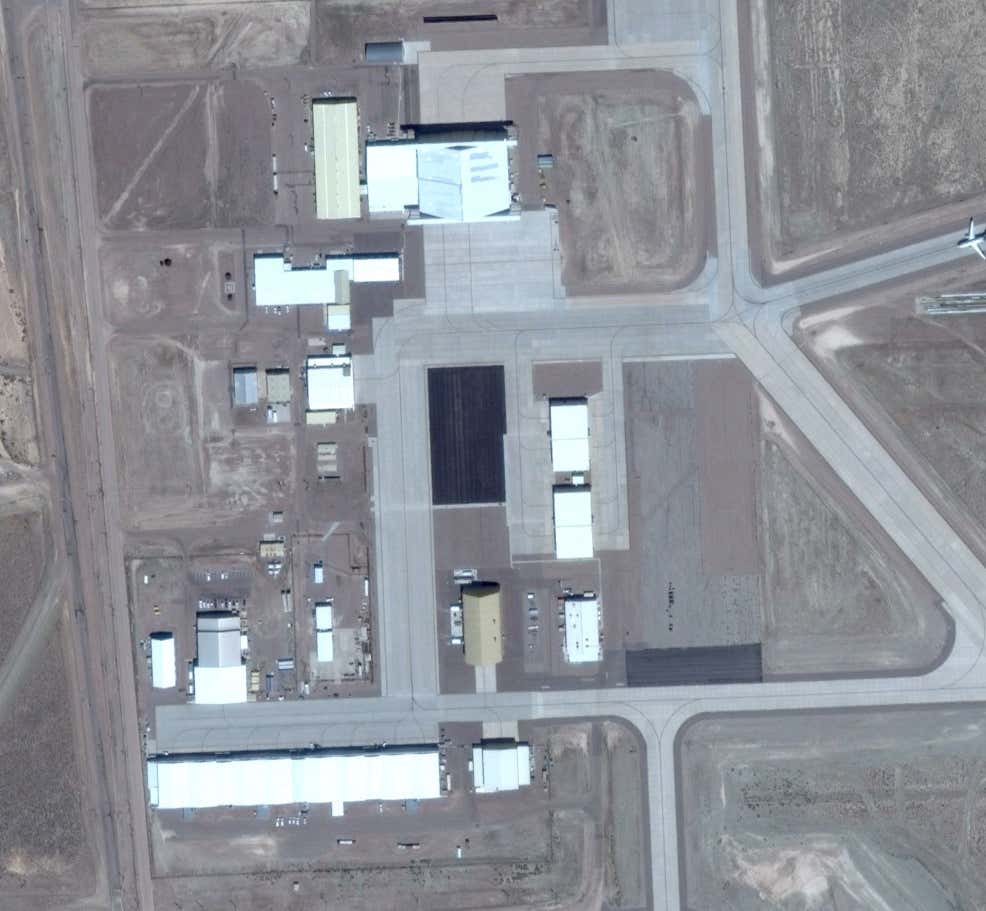
GOOGLE EARTH
The same area circa 2016.
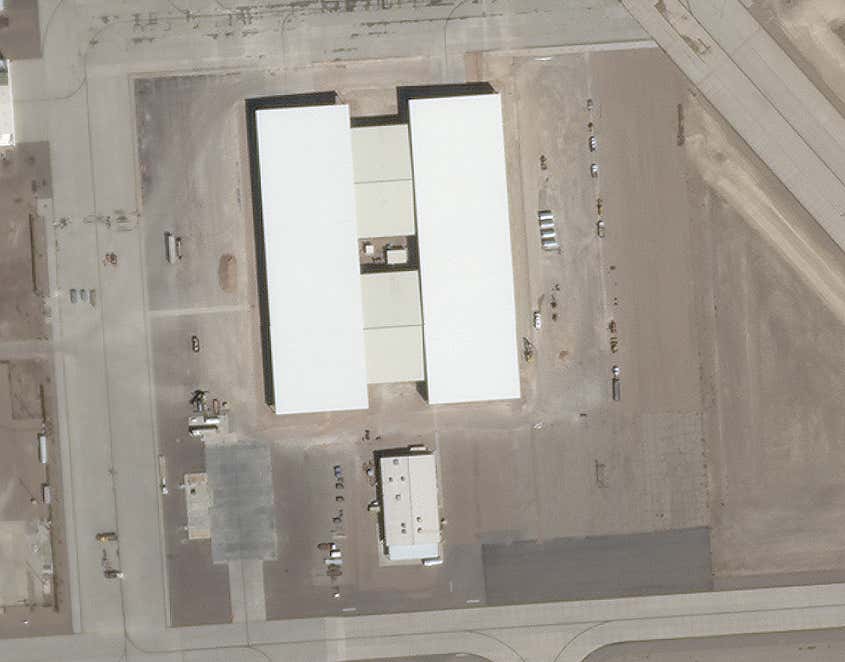
PHOTO © 2020 PLANET LABS INC. ALL RIGHTS RESERVED. REPRINTED BY PERMISSION.
The near-finished product seen in September 2020.
The unique additions to hangars 20-23 create a combined hangar facility that is the largest of any on base by a substantial margin, measuring roughly 400 by 500 feet, overall. The additions have more in common with the 'scoot and hide' shelter extensions built onto the arm-de-arm hangar located between the ramp and the runway in the mid-2000s than they do with a traditional hangar. They appear to be more of a covered area portico-like addition than anything else, with the existing central hangars still acting as they always did.

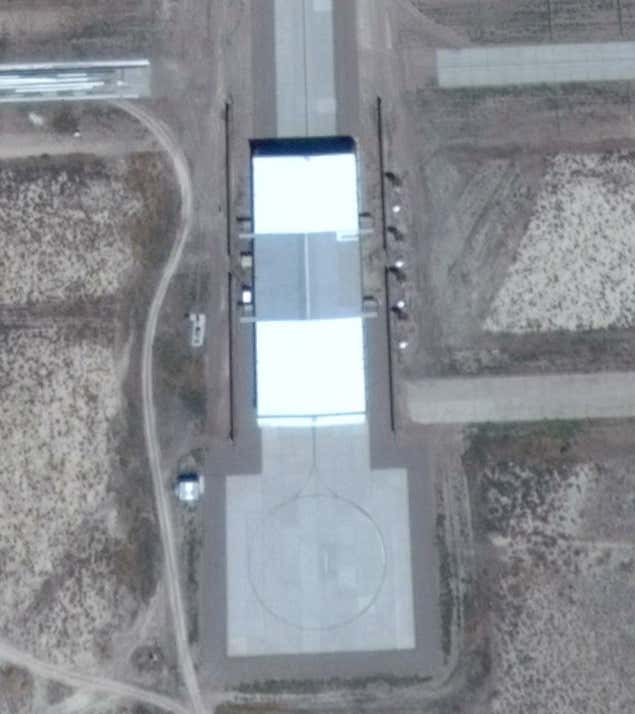
GOOGLE EARTH
The 'scoot and hit' extensions built over the arm-de-arm shelter that sits between the apron and the runway at Groom Lake.
More views of this new add-on facility and its shed-like nature came from Gabriel Zeifman's photos that he took while circumnavigating the Nevada Test and Training Range (NTTR) with air traffic control's approval on a number of occasions:
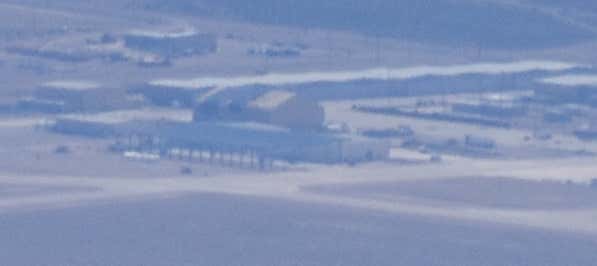
GABRIAL ZEIFMAN
A shot by private pilot Gabriel Zeifman of Area 51 included early stages of construction of the extensions to Hangar 20-23
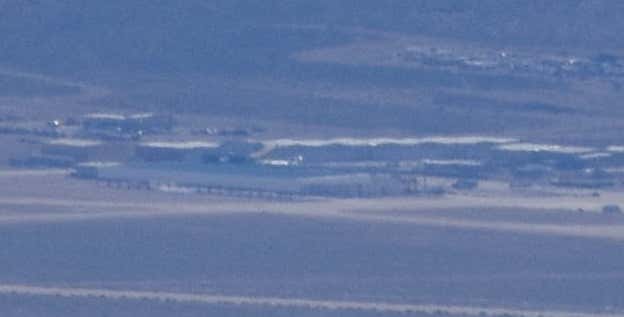
GABRIAL ZEIFMAN
Another shot months later shows the relatively massive covered area taking shape.
So, what is this somewhat peculiar addition all about? For hangars that easily fit one F-117 each with plenty of room to spare, having a huge covered structure built onto them doesn't make a lot of sense, at least not for their original purpose, and especially on both sides of what are already drive-through hangars. As such, it seems that this revamped facility is not meant for a small number of large tactical aircraft, but instead, it seems to have been remodeled to support a fleet of smaller tactical aircraft, ones that are designed to fly together in a collective swarm on missions.
What's the justification behind this conjecture? Well, it solves a number of problems with scaling up testing of large swarms of unmanned combat air vehicles. First off, servicing and then staging the aircraft for a mission requires a lot of space and would benefit more by a production line-like arrangement than a traditional hangar and apron layout. The modifications are fairly ingenious as the arrangement would allow for a large group on drones to park outside of the view of satellites and out of the weather on one side, with the hangars in the center working as pass-through servicing bays for preparing them for another flight, and then moving them to the other side to await a launch en-masse on their next mission. Upon return, they would be parked on the other side once again and await servicing and staging for reuse. Just learning how to best stage, launch, and recover a large number of semi-autonomous jet-powered unmanned systems together will surely be a focus of any such program.
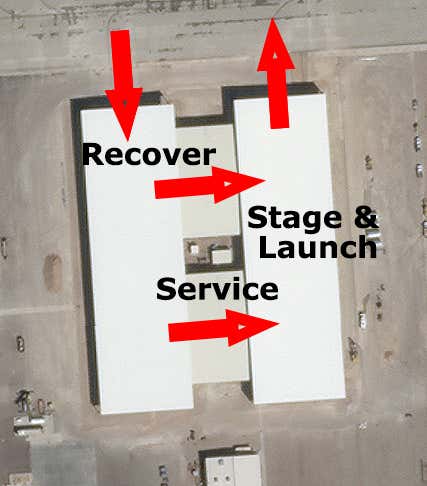
PHOTO © 2020 PLANET LABS INC. ALL RIGHTS RESERVED. REPRINTED BY PERMISSION.
The notional concept behind this odd construction.
We believe, and sincerely hope, that advanced unmanned combat air vehicle (UCAV) testing has occurred for years under deep classification after the Air Force suddenly acted like the entire concept doesn't even exist towards the end of the 2000s, a bizarre reality with huge implications you can read all about in this must-read feature of ours. In fact, it is even possible that a small pocket force of advanced UCAVs exists today in a semi-operational state. Regardless, the type of testing this revamped facility would support would likely be on a different scale.
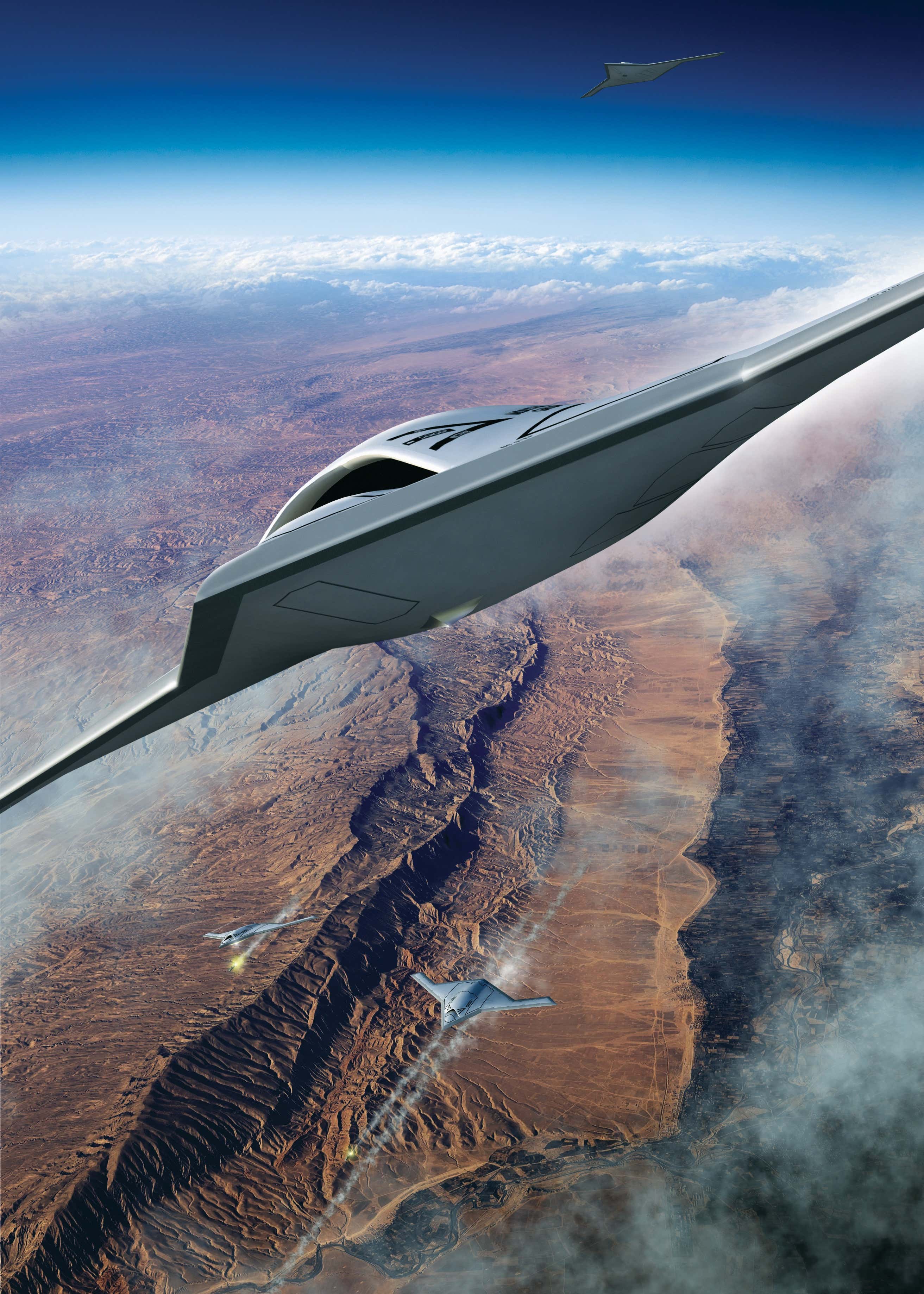
NORTHROP GRUMMAN
It is highly likely that higher-end UCAVs that are the size of manned fighters or larger and possess extreme range and low-observability have been in testing for years or even a small pocket operational force exists, but this is less likely the case for large swarms of attritable unmanned systems.
Testing of advanced networked UCAVs in groups of three or even six is one thing, what we are seeing here could potentially support much larger groups of lower-end, smaller UCAVs or drone surrogates, the likes of which have taken on a high profile recently. As such, the aircraft that would occupy this facility could be more about testing the concepts of networking, command and control, and experimental tactics and operating procedures related to large swarms than it would be about just the vehicles themselves. That being said, it is totally possible that those airframes could still represent a potential future production vehicle.
Boeing, Kratos, and certainly Lockheed are all working on so-called attritable UCAVs that cost millions each, not tens of millions, are highly modular, and are optionally expendable. Beyond Kratos' XQ-58A Valkyrie, the company is known to have a number of classified programs underway that are of a similar in nature, but have to do with more advanced concepts and testing. You can read all about the future of attritable swarming drones here.

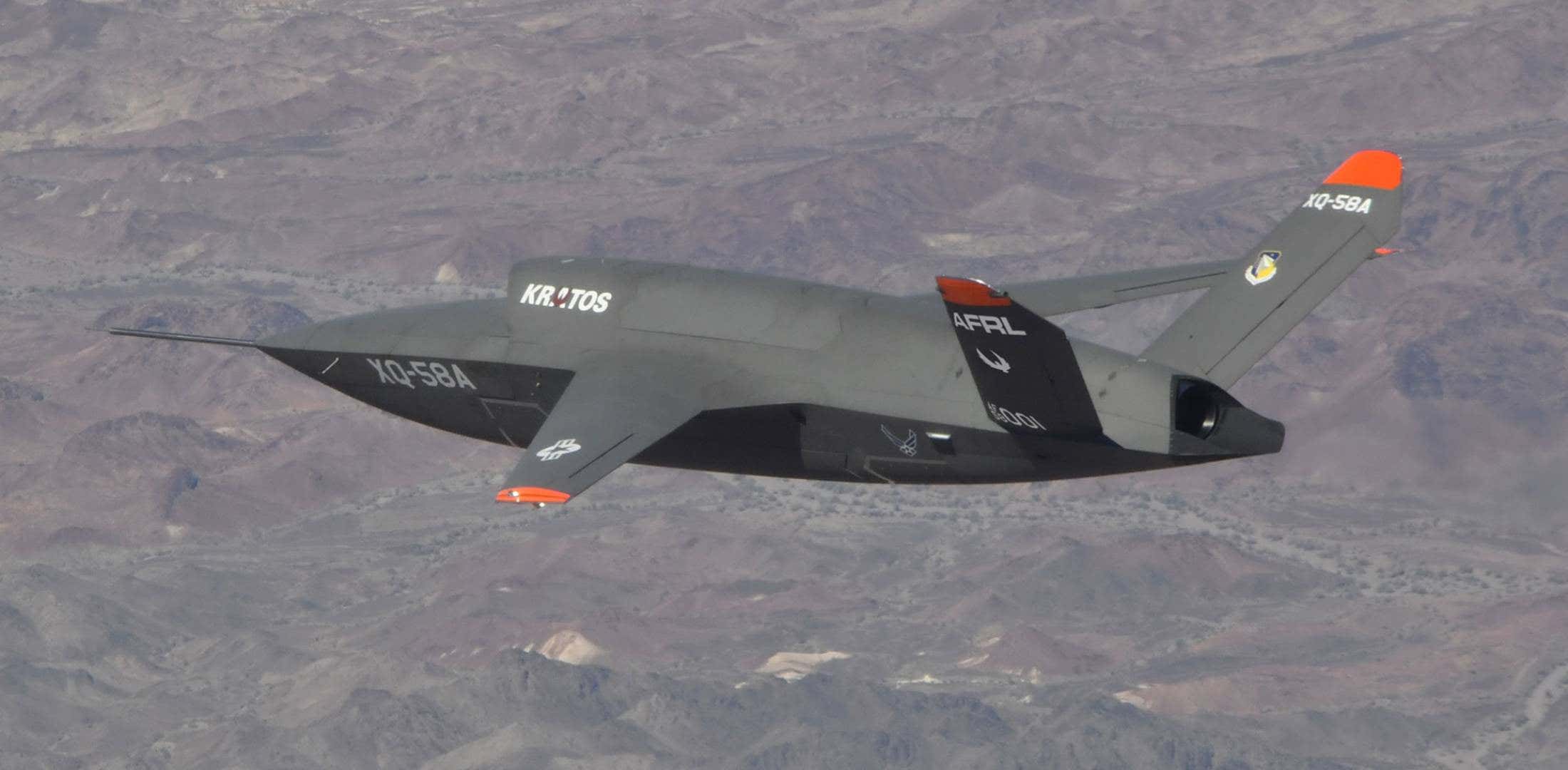
USAF
Kratos XQ-58A Valkyrie.
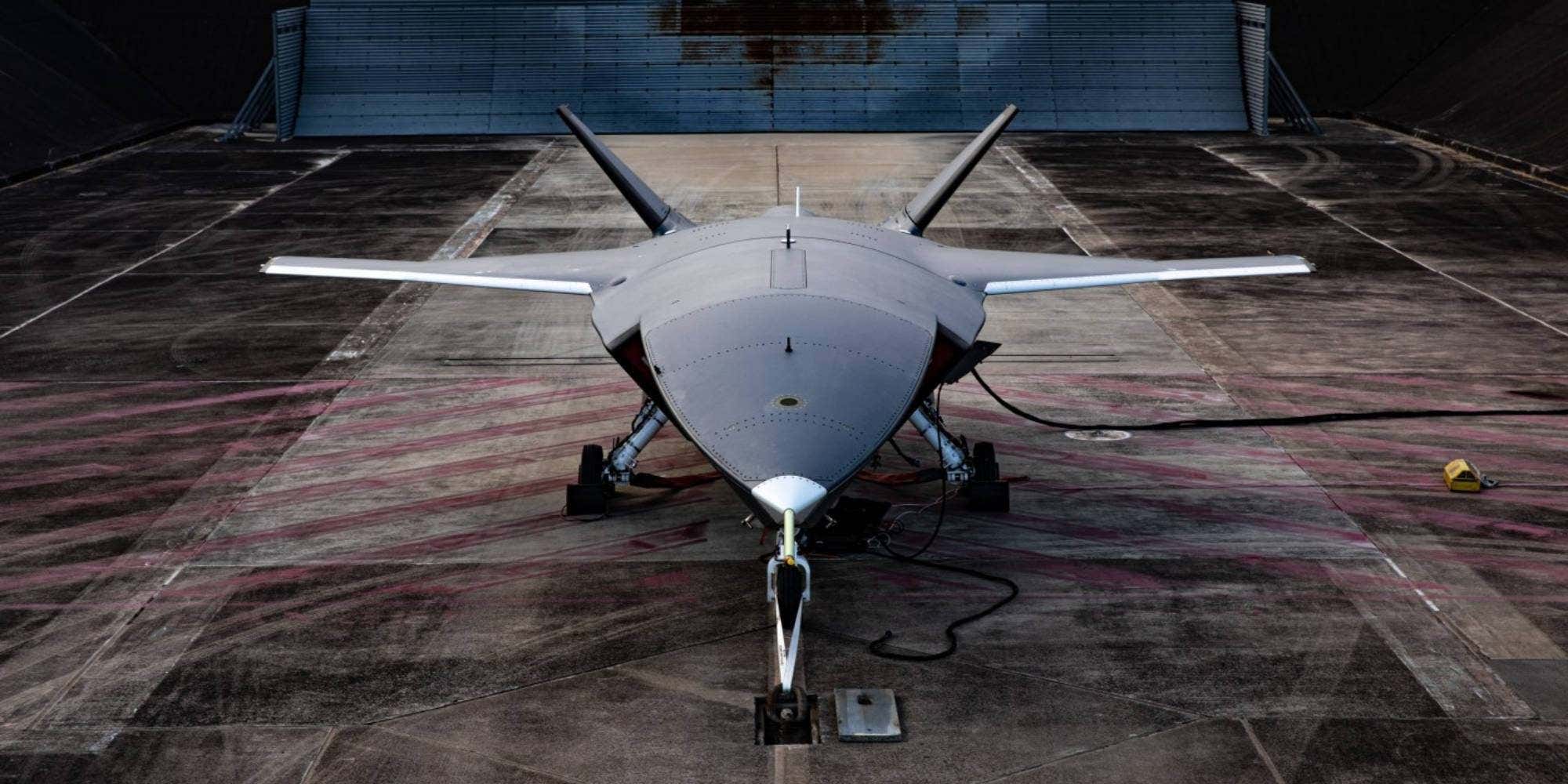
BOEING
Boeing's loyal wingman drone that is currently being developed for the Royal Australian Air Force. A similar system is also being offered to the USAF, depending on their requirements.
These jet-powered stealthy drones are smaller than their fighter-sized, high-end UCAV counterparts, and would be better suited for the airspace restrictions within 'the box' around Area 51 and within the greater NTTR. Many of the lessons learned from attritable UCAVs could be extrapolated over large swarms of those higher-end unmanned systems, as well. These types of drones are also the types that are being designed for the so-called loyal wingman role, in which a number of them are electronically 'tethered' via a semi-autonomous command-link interface to another manned aircraft. So, this concept of operations, which you can read all about here, could also be part of this advanced testing.
All this comes as the news that a demonstrator for the Air Force's Next Generation Air Dominance (NGAD) program has flown. As we discussed in detail, NGAD is not a new fighter, but a family of systems that will leverage common networking and command and control architecture, as well as sensor concepts, to work as a team to dominate air battles of the future. Swarming UCAVs are absolutely going to be part of that, so a facility that can support that aspect of NGAD makes a lot of sense. In fact, the 'demonstrator' itself could be the Air Force's first large UCAV swarm, not just one airplane, and the manufacturer of those drones would have leveraged the flying force's new 'e-Plane' concept of rapid digital design and prototyping to migrate the concept from idea to iron on the ramp in record time.
Thanks to our colleagues Steve Trimble and Marcus Weisgerber, The War Zone's long-standing assertion that the Air Force's new B-21 Raider stealth bomber would work as a central C3 node for tactical aircraft, including networked swarms of UCAVs, was all but outright confirmed by the Air Force's Chief of Staff. Once again, we are talking about an interconnected family of systems here.
Chief of Staff Brown also underlined that the NGAD demonstrator is more about how it was designed and built under the 'e-Plane' doctrine than it being an exquisite airframe (or airframes) itself. Regardless, with any UCAV type initiative, especially on the lower end, rapid evolutionary iterations of a design produced in small batches that use the same foundational networking and command and control architecture will be central to the effort. Once again, this fits perfectly with what we think this new facility at Area 51 will be used to support.
Considering how fast the rest of the world is moving forward on UCAVs and attritable unmanned air combat systems, not to mention the glaring limitations of traditional manned tactical aircraft when it comes to emerging peer-state threats in Asia, one would imagine that the USAF has finally put these programs into high gear. Once again, while advanced UCAVs have likely been tested for some time clandestinely, larger swarms of smaller and far more modular and affordable systems that are emerging today as a key future air superiority concept are less likely to have been.
Our assessment is that there is a strong possibility this major construction project indicates that this is about to change.
Contact the author: Tyler@thedrive.com
No comments:
Post a Comment